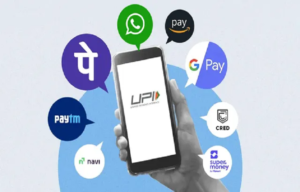
How much do you know about ad fraud? If you are merely a consumer of digital media, probably very little. But if you are an advertiser, publisher, or digital marketing expert, you likely know that ad fraud is a very real problem responsible for tens of billions of dollars in annual advertising losses. Enter streaming fraud, the latest player in the ad fraud game.
Marketers are familiar with ad and click fraud scams that target:
- Pay-per-click (PPC) ads
- Website banner ads
- Ads published in streaming videos
- Mobile app ads
- Mobile app downloads and installations.
Most of what people know about ad fraud is how it targets display ads. In fact, most ad fraud is perpetrated through display opportunities. But a recent rise in fraudulent audio streams suggests that ad fraud’s perpetrators are taking advantage of a streaming industry ill-prepared to stop it.
The Basics of Streaming Fraud
One of the unique aspects of streaming fraud is that it takes advantage of mostly passive activity. By contrast, PPC ad fraud is based on easily measurable human activity – like navigating websites, clicking on links, and putting items into a shopping cart. Audio streaming is different in the sense that it often occurs in the background.
If you are streaming a service like Spotify while you work, your media player runs in the background. Listening to the stream is considered a passive activity. Ten years ago, this would have been a problem for fraudsters. It is not anymore.
Fraudsters have figured out how to simulate streams that look just like legitimate streams initiated by human listeners. The problem for advertisers is that no one is really listening to the simulated streams. Nonetheless, advertisements are served to those streams but never reach human years. Every ad served represents a charge against the advertiser.
Measuring the Seriousness of the Problem
It is not clear how serious a problem streaming fraud is. One of the biggest hindrances to understanding its severity is actually measuring it. Back in 2020, Vancouver-based Beatdapp estimated that between 3% and 10% of all audio streaming was fraudulent. In 2023, Beatdapp is confident in a more aggressive estimate of 10% or more.
Meanwhile, a French government report analyzing fake audio streams via YouTube, Amazon Music, and Apple Music concluded an estimated 1% to 3% fraudulent streams. It is obvious from comparing the three estimates that measuring fraudulent streams is neither easy nor standardized. There is too much variation.
Better Ways to Detect Fraud
The makers of Fraud Blocker, a software package designed to prevent ad fraud by identifying it in its earliest stages, say that detecting fraudulent audio streams isn’t as easy as it sounds. But developing the tools to do so is an ongoing thing. Companies like Fraud Blocker are working hard to come up with better ways to distinguish between legitimate and fake audio streams.
In the meantime, streaming fraud could be limited somewhat just by changing how digital advertising works. As things currently stand, the biggest players in the digital advertising space are the third-party ad publishing networks that sign up with tech companies like Google and Amazon.
It is in the third-party arena where most ad fraud takes place. Fraudsters set up fake websites and publishing networks and then sign up with one or more tech companies to serve ads for them. There are so many ads and ad publishers that the system is continually overwhelmed. Finding fraud in such a large and convoluted behemoth is like finding a needle in a haystack. Streaming fraud is just the latest needle to be found.








